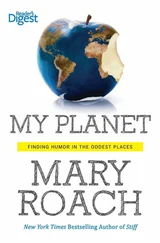Fahey, my residue expert, consults for the pet food industry. These are the animal sciences people that NASA should have been working with, not the Air Force vets. The top two concerns of the pet food manufacturer? Palatability and “fecal characteristics”: a clean bowl and a clean living room carpet. First and foremost, dog owners want to feed their pet something it appears to like. I like to think that is NASA’s goal as well. “And the number-two concern,” said Fahey, setting up a joke he had not intended to make, “is stool consistency. We like to have a fecal material that is hard enough to be picked up and disposed of easily. Not some big mass of runny stuff.” Ditto the Gemini and Apollo astronauts.
Pet-food makers also share the early space food scientists’ goal of low “defecation discharge frequency.” A dog in a high-rise apartment has but two discharge opportunities: once in the morning before its owner leaves for work, and again in the evening. “They have to be able to hold it eight hours,” says Fahey. Just like the astronaut on the launch pad. Or the astronaut hoping to put as much time as possible between encounters with the fecal bag.
The other way to lower discharge frequency might be to choose a mellow breed of astronaut. Hyperactive dogs have fast metabolisms; food passes through quickly, so it doesn’t have a chance to be completely digested. Hunting dogs, high-strung by nature, tend to have runny stools. And because they’re programmed to bound off after prey at any given moment, they wolf their food (no doubt the origin of the verb). This compounds the problem. The less you chew your food, the more of it passes through undigested.
What would Fahey have fed the early astronauts? As a starch, he recommended rice, because it’s the lowest-residue of all the carbohydrates. (This is why Purina makes Lamb & Rice, not Lamb & Fingerling Potatoes.) Fresh fruits and vegetables he’d skip, as they create a high-volume, high-frequency stool situation. On the other hand, if you feed someone highly processed foods with no residue, no fiber at all, they’ll be constipated. Which, depending on the length of the flight, could be ideal: “Under current conditions,” wrote Franz Ingelfinger, “with the emphasis on short-term flights, I am sure that the most practical solution to the waste-disposal problem has been a constipated astronaut.”
TWELVE YEARS AFTER the corned-beef-sandwich incident, astronaut John Young yet again embarrassed his employer in the national news media. Young, along with Apollo 16 crewmate Charlie Duke, was sitting in the Lunar Module Orion after a day out and about collecting rocks. During a radio debriefing with Mission Control, out of the blue, Young declares, “I got the farts again. I got ’em again, Charlie. I don’t know what the hell gives them to me…. I think it’s acid in the stomach.” Following Apollo 15, in which low potassium levels were blamed for the heart arrhythmias of the crew, NASA had put potassium-laced orange, grapefruit, and other citrus drinks on the menu.
Young kept going. It’s all there in the mission transcript. “I mean, I haven’t eaten this much citrus fruit in 20 years. And I’ll tell you one thing, in another 12 fucking days, I ain’t never eating any more. And if they offer to serve me potassium with my breakfast, I’m going to throw up. I like an occasional orange, I really do. But I’ll be damned if I’m going to be buried in oranges.” Moments later, Mission Control comes on the line and provides Young with yet more fodder for indigestion.
CAP COM [capsule communicator]: Orion, Houston.
YOUNG: Yes, sir.
CAP COM: Okay, you [have] a hot mike.
YOUNG: Oh. How long have we had that?
CAP COM: It’s been on through the debriefing.
This time, it wasn’t Congress that got riled. The day after Young’s comments hit the press, the governor of Florida issued a statement in defense of his state’s key crop, which Charlie Duke paraphrases in his memoir: “It is not our orange juice that is causing the trouble. It’s an artificial substitute that doesn’t come from Florida.”
In fact, it was the potassium, not the orange juice. The “coefficient of flatulence” for orange juice—to use the terminology of USDA flatus researcher Edwin Murphy, another panelist at the 1964 Conference on Nutrition in Space and Related Waste Problems—is low.
Murphy reported on research he had done using an “experimental bean meal” fed to volunteers who had been rigged, via a rectal catheter, to outgas into a measurement device. He was interested in individual differences—not just in the overall volume of flatus but in the differing percentages of constituent gases. Owing to differences in intestinal bacteria, half the population produces no methane. This makes them attractive as astronauts, not because methane stinks (it’s odorless), but because it’s highly flammable. (Methane is what utility companies sell, under the rubric “natural gas.”) [96] If you’re among the 50 percent of the population who produce methane, you can play human pilot light. Your friends can hold a match to your gas and watch it ignite and burn blue.
Murphy had a unique suggestion for the NASA astronaut selection committee: “The astronaut may be selected from that part of our population producing little or no methane or hydrogen”—hydrogen is also explosive—“and a very low level of hydrogen sulfide or other malodorous trace flatus constituents not yet identified…. Further, since some individual astronauts may vary in the degree of flatulent reaction to a given weight of food, individuals can be chosen who demonstrate a high resistance to intestinal upset and flatus formation.”
In his work, Murphy had encountered one such ideal astronaut candidate. “Of special interest for further research was the subject who produced essentially no flatus on 100 grams dry weight of beans.” As opposed to the average gut, which will, during the peak flatulence period (five to six hours post–bean consumption) pass anywhere from one to almost three cups of flatus per hour. At the high end of the range, that’s about two Coke cans full of fart. In a small space where you can’t open the window.
As an alternative to recruiting the constitutionally nonflatulent, NASA could create non-“producers” by sterilizing their digestive tract. Murphy had fed the notorious bean meal to a subject who was taking an antibacterial drug and found that the man expelled 50 percent less gas. The saner approach, and the one NASA actually took, was to simply avoid your high coefficient-of-flatus foods. Up through Apollo, beans, cabbage, [97] Cabbage resurfaced in the form of kimchi—fermented spiced cabbage—on board the International Space Station when Korea’s first astronaut visited. Space kimchi developer Lee Ju-woon works at the Korean Atomic Energy Research Institute, where scientists are developing ways to harness energy from intestinal kimchi fission. No, they aren’t. But they should be.
Brussels sprouts, and broccoli were blacklisted. “Beans were not used until Shuttle,” states Charles Bourland.
There are those who welcomed their arrival, and not just because they’re tasty. The zero-gravity fart has been a popular orbital pursuit, particularly on all-male flights. One hears tell of astronauts using intestinal gas like rocket propellant to “launch themselves across the middeck,” as astronaut Roger Crouch put it. He had heard the claims and was dubious. “The mass and velocity of the expelled gas,” he told me in an email that has forevermore endeared him to me, “is very small compared to the mass of the human body.” Thus it was unlikely that it could accelerate a 180-pound astronaut. Crouch pointed out that an exhaled breath doesn’t propel an astronaut in any direction, and the lungs hold about six liters of air—versus the fart, which, as we learned from Dr. Murphy, holds at most three soda cans’ worth.
Читать дальше












